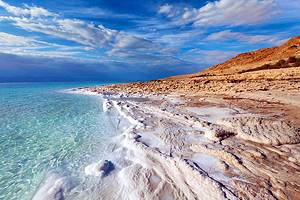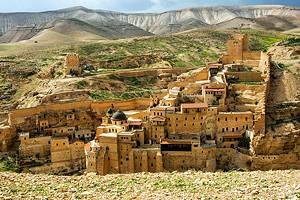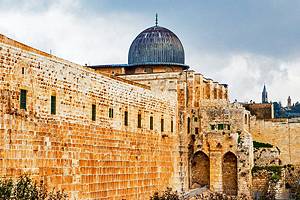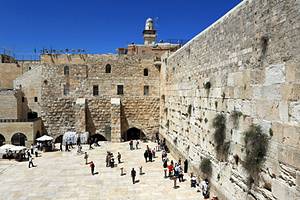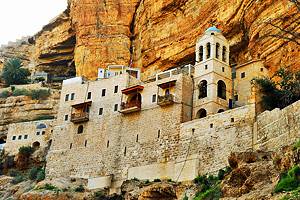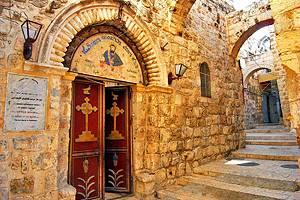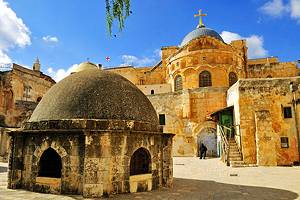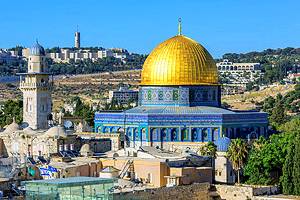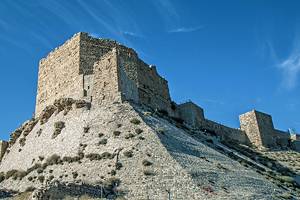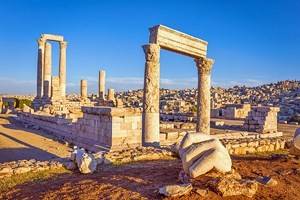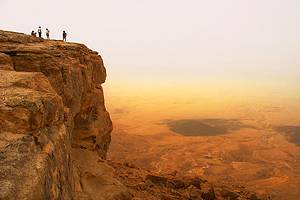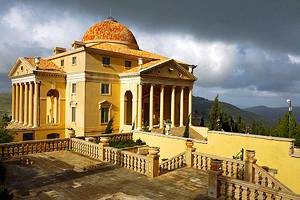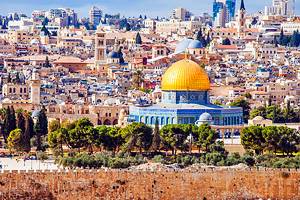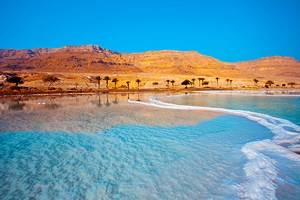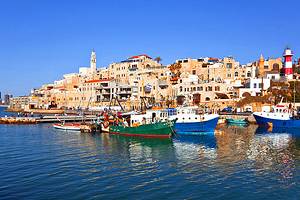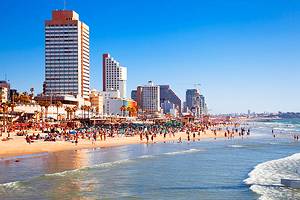Attractions in the Dead Sea Region, Jordan
The Dead Sea is one of Jordan's top tourist attractions, but it's not just about floating in the water itself.
This area is packed full of things to do, from the gentle pursuits of soaking in thermal hot springs to action-packed hike-swims within the waters of the vast canyon of Wadi Mujib.
History-minded travelers aren't left out either. The Dead Sea region is one of Jordan's best places to visit for important sites from both Old Testament and New Testament history, and Kerak Castle is easily included in a Dead Sea day trip even though it's technically not in the Dead Sea region.
Bethany-Beyond-the-Jordan sits at the sea's northern end, and the site were Salome danced to convince Herod Antipas to bring her the head of John the Baptist is set in the sea's border of hills. In the southern section of the Dead Sea, there are archaeological sites related to the story of Lot.
It's a fascinating area to explore and within easy reach as a day trip from either Amman or the town of Madaba.
You could make a good loop, choosing three sites (including a stop to float in the sea itself) to visit along the way on a day tour with a driver. Most taxi drivers in both Madaba and Amman are happy to quote prices to do this, and most hotels have recommended drivers and can fully arrange Dead Sea trips for you.
Find out what there is to see and do in the area with our list of the top attractions in the Dead Sea region.
Dead Sea Resort Area
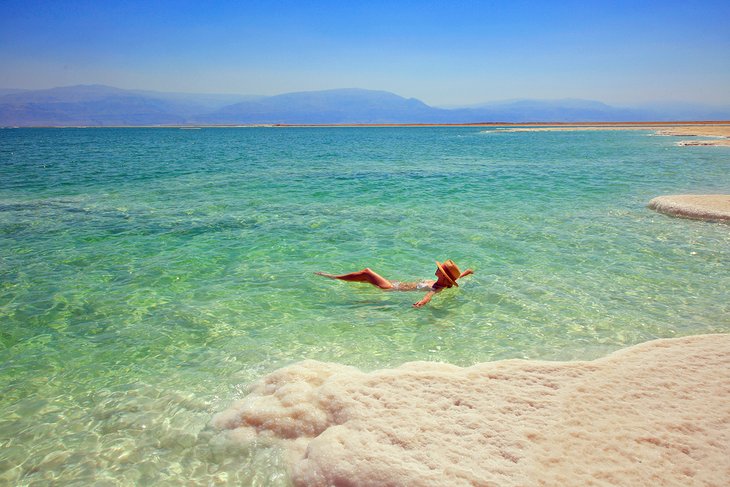
The beach area of Jordan's Dead Sea coastline, with five-star spa resorts and day-access beach complexes, sits on the northern section of the sea.
Just 60 kilometers southwest from Amman, it's within easy reach from the capital or from Madaba, which lies 40 kilometers to the east.
There are three private beach complexes strung along the shore, which offer day access to the sea and their facilities for an entrance fee. Running north to south, the complexes are Al-Wadi Resort, Amman Beach, and O Beach.
If you are road-tripping the Dead Sea region on a day trip from Amman or Madaba these are the best places to stop off for your Dead Sea float.
All three offer clean strips of stone- and grey-sand beach with sun loungers, picnic tables, sun-shades, and freshwater showers on the beach.
The complexes behind the beach area at all of them have restaurants and snack shops, freshwater swimming pools, shops selling the Dead Sea's mineral-rich skincare products, and clean bathrooms and changing areas.
The restaurants at the Dead Sea beach complexes offer a vast lunch buffet, and most visitors opt to buy the good-value beach access plus buffet entrance ticket.
If you only want to stop for a quick dip, though, there's a slightly cheaper beach access ticket that still grants you access to all the other facilities.
Note that these beaches are at their busiest on Fridays and Saturdays (the Jordanian weekend), so if you're looking for a quieter beach experience, try to time your visit for another day.
Alternatively, if you want to base yourself in the Dead Sea region rather than visit on a day trip, there are also several large spa resorts clustered on this stretch of shoreline. Most visitors who choose to stay overnight are here to indulge in some luxurious spa treatments with a distinct Dead Sea quality.
The Dead Sea's mineral-rich mud is well known to have therapeutic properties, and the resorts here all offer room and spa ritual packages for a pampering time-out from traveling.
Dead Sea Panoramic Complex

Sitting on a ridge, looking over the Dead Sea below, this complex with an observation platform and a museum devoted to the Dead Sea is a great stop on your way to or from the Dead Sea shore itself.
The museum here documents the geology of the Dead Sea and this area's importance through human history.
For the best views, stretching across the sea to the dusky-hued hills of Israel and the Palestinian Territories, try to come here early in the morning. Later in the day, the western bank of the Dead Sea is often covered in haze.
The 30-kilometer journey here from Madaba is also one of the most dramatic access roads to the Dead Sea, with the descent winding down through jagged hills, cut through with swaths of wadis (valleys). This is also the access road to the hot springs of Hammamat Ma'in.
Bethany-Beyond-the-Jordan
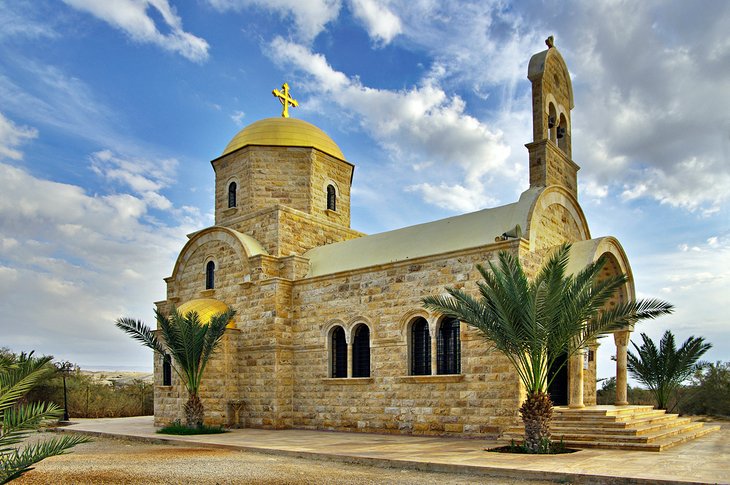
Sitting 19 kilometers north of the Dead Sea's northern tip, this archaeological and religious site is one of the most important and meaningful pilgrimage sites for Christian visitors to Jordan.
Most scholars believe that this is the site where Jesus was baptized by John the Baptist. During Pope John Paul II's Holy Land tour in 2000, the site's claim was officially sanctified by him.
Rubbing right up against the border with Israel and the Palestinian Territories, archaeological work to uncover the ruins here only began in the mid-1990s after Jordan's peace deal was signed with Israel, and the area's landmines could be cleared.
The ruins unearthed here reveal a Byzantine-era pilgrimage complex, with the foundations of churches and baptism ponds, affirming that early Christians believed this to be the Bethany where Jesus was baptized.
The earliest foundations of a church discovered here dates back to the 3rd century, making it one of the oldest in the world.
Right beside the Jordan River (which is little more than a narrow stream these days) is the modern Greek Orthodox Church of St. John the Baptist. A platform on the river bank here is used for pilgrims who want to be baptized in the Jordan.
For non-religious visitors, the platform here is where you can snap photos right on the border, as the opposite river bank (a couple of meters away) is Israel.
Thermal Springs of Hammamat Ma'in
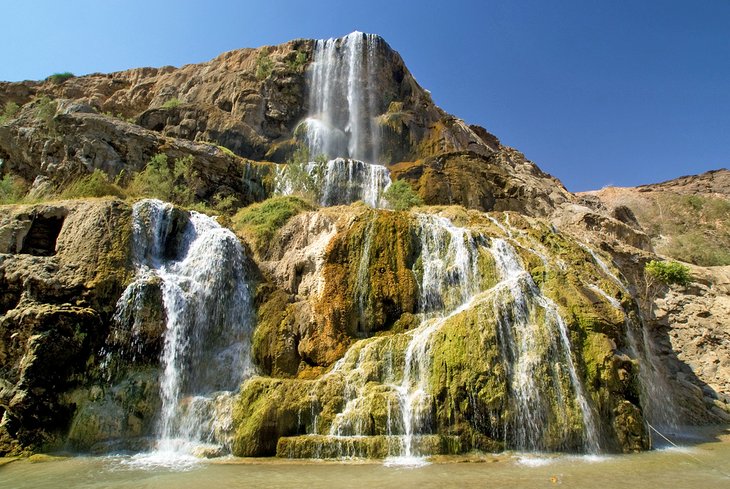
The thermal springs of Hammamat Ma'in are secreted between barren high hills, within the lush valley of Wadi Zarqa Ma'in.
Here, steaming waterfalls gush down the cliffs into pools where people soak in the hot, mineral-rich water.
There are a variety of gender-separated public pools for bathing. The indoor pools are basic and a bit institutional, so best avoided if you're here to soak up the ambience as well as bathe.
The best option is the outdoor family pool (men-only groups cannot enter), with its little waterfall plunging into the steaming water.
For a luxurious Hammamat Ma'in experience, though, head to the resort. As well as providing one of Jordan's best hideaway-style spa stays, the Ma'in Hot Spring Resort & Spa offers day passes for casual visitors, which give you access to their spa facilities and private, waterfall-fed hot pools.
Mukawir
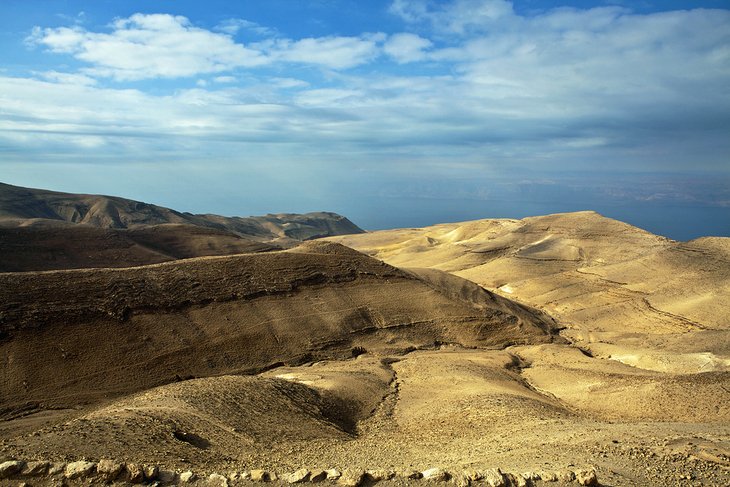
The remains of Mukawir (Machaerus) lie scattered atop a 700-meter-high summit overlooking the Dead Sea.
Known mostly as the location where Salome danced for Herod Antipas, and where he then had St. John the Baptist beheaded, Mukawir was once a fortified castle built by Herod the Great.
The ruins are actually quite sparse, and mostly foundations only. Most people come here for the astonishing views across the rippling hills, down to the Dead Sea, from the site.
The easiest ruins to decipher while here are the defensive walls and the outline of a bathhouse, while the platform area on-site with re-raised columns is said to be the spot of Salome's dance.
From Mukawir, it is a 17-kilometer drive on the most direct road down to the Dead Sea shore. The site is easily included in a Dead Sea day trip loop.
Wadi Mujib
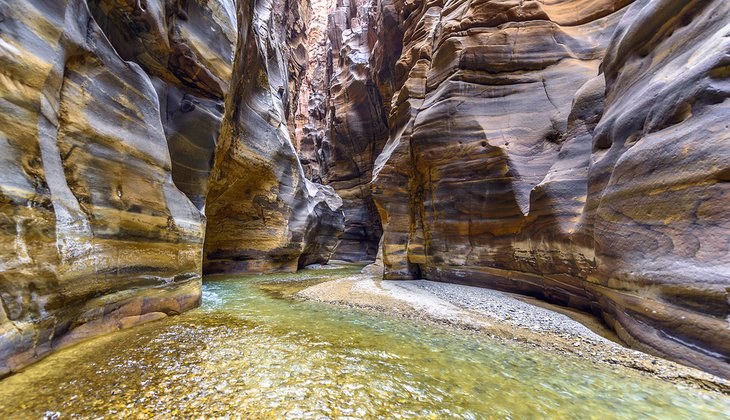
Feted as the lowest national park in the world and officially known as Wadi Mujib Biosphere Reserve, Wadi Mujib is a towering canyon area that slices through Jordan's desert mountains, opening out at the Dead Sea.
The main activity area of Wadi Mujib is the Dead Sea area where the towering, rose-toned gorge walls are at their narrowest.
From the entrance here, adventurous travelers can take part in a number of wet-hikes that explore the canyon.
Activities here mostly take place during the summer months when the water is at its lowest (the Wadi is closed to visitors during certain seasons and after heavy rainfall due to dangerous conditions).
When open, hikes here always involve getting soaking wet as you swim-scramble through the inner canyon and, at the end of the main trail, dive over a small waterfall into a pool below. They're great fun for hardy, adrenaline-seekers but not suitable for anyone not confident in water.
The upper reaches of the canyon can be viewed from near the small town of Dhiban along the King's Highway.
Sodom & Gomorrah
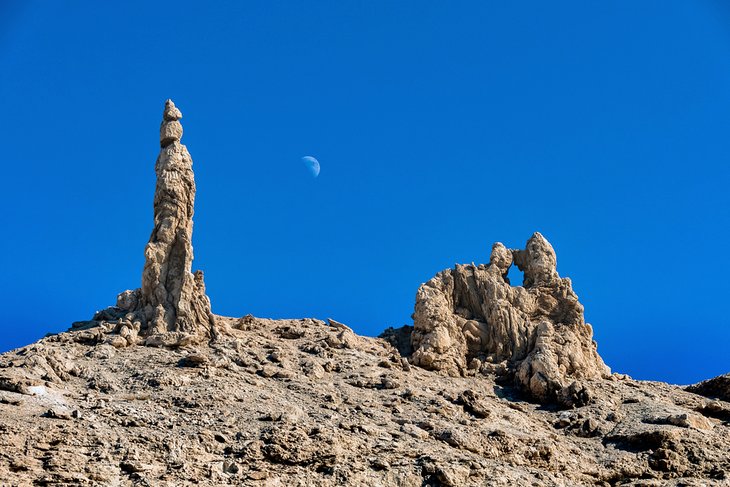
Following the Dead Sea Highway south from the entrance to Wadi Mujib, you'll come to the Lot's Wife pillar rock formation.
There are good views of shorefront salt deposits from the parking area here, so it's a popular place to visit for photographs.
To see the archaeology site identified as Sodom and Gomorrah by some biblical scholars, keep driving south and take the main turnoff east, which leads to Kerak Castle.
A few kilometers up this switchback road is the sparse Bab Ad-Dhraa site, once a fortified Bronze Age town and then suddenly abandoned.
Archaeologists who worked on the excavations here date the site's settlement from approximately 3200 BC to 1900 BC.
Lisan Peninsula
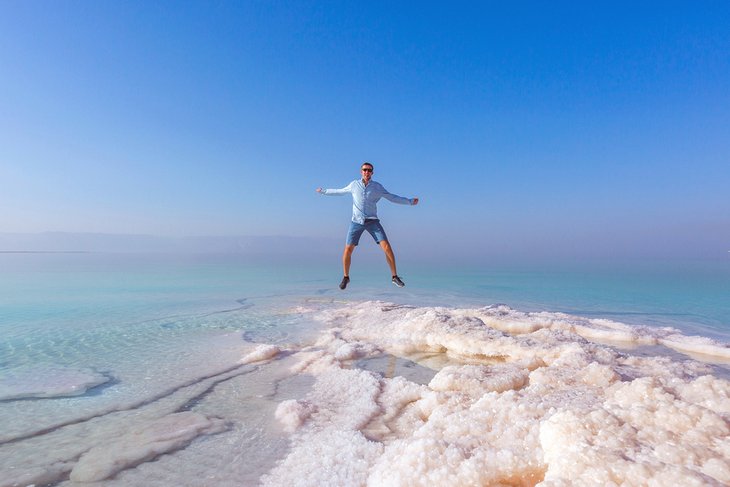
The southern section of Jordan's Dead Sea is where the potash industry is based. As you drive through, you can see the evaporation pools where potassium chloride, calcium, and bromine are extracted from the Dead Sea water.
There are various places along the shoreline here where you can get good views of the salt deposits.
On the eastern side of the road, the small settlements are surrounded by fertile farmland where tomatoes and bananas are grown.
If you keep driving south along the Dead Sea Highway, right to the southern end of the sea, you'll get to the turnoff to Tafilah, which connects up onto the southern section of the King's Highway, and ends at Petra.
Lot's Cave Monastery
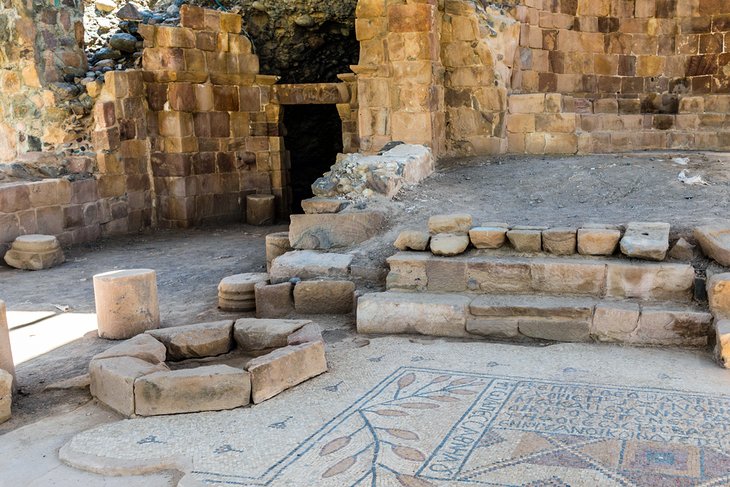
Sitting just off the Dead Sea Highway, 48 kilometers south from Wadi Mujib, is the small archaeological site known as Lot's Cave.
This is where some biblical scholars believe Lot and his daughters lived after God destroyed Sodom and Gomorrah.
A stepped walkway winds up the hill to the site, with good views of the surrounding countryside along the way.
Before (or after) you climb up to the site, pop in to the Lowest Point on Earth Museum, where artifacts, including mosaic fragments and ceramics, unearthed from the site and from other nearby archaeological sites such as Bab Ad-Dhraa are on display.
Once up the hill at the site itself, the main ruins here, built in front of the cave, are of a much younger Byzantine-era church-monastery complex. According to the inscriptions found here, the church was dedicated to Lot, showing that in the Byzantine era, people believed that this cave was the place where Lot and his family stayed.
There are some well-preserved fragments of mosaic flooring in the church ruins, as well as the remains of a reservoir.
Feynan Nature Reserve
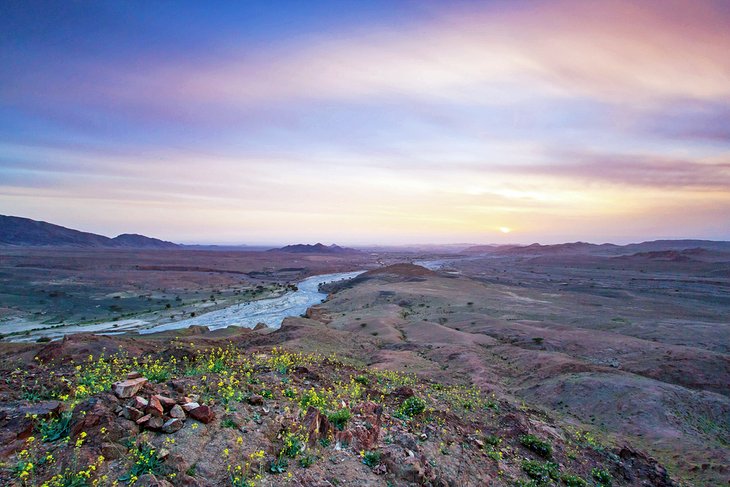
The Dead Sea Highway, once you've passed the southern end of the Dead Sea, is bordered by the desolate desert landscapes of the Wadi Arabah.
Heading this way, about 60 kilometers south from Lot's Cave, you reach the turnoff into Feynan, which can only be accessed by 4WD.
This desert area encompasses the lower elevation of Wadi Dana Biosphere Reserve, which at its top height sits at around 1,700 meters, with Dana Village accessed from the King's Highway, and here, amid the desert, sits below sea level.
Feynan Eco-lodge here arranges a number of activities within the desert area, including hikes to copper mines used in the Iron Age and Roman era, and canyoning. It's also the only place to stay in the area. A night at Feynan is an experience in itself, as the eco-lodge doesn't use electricity.
From Feynan, there is a popular, and incredibly beautiful, one-day hiking trail up the Wadi Dana to Dana Village.
Kerak Castle
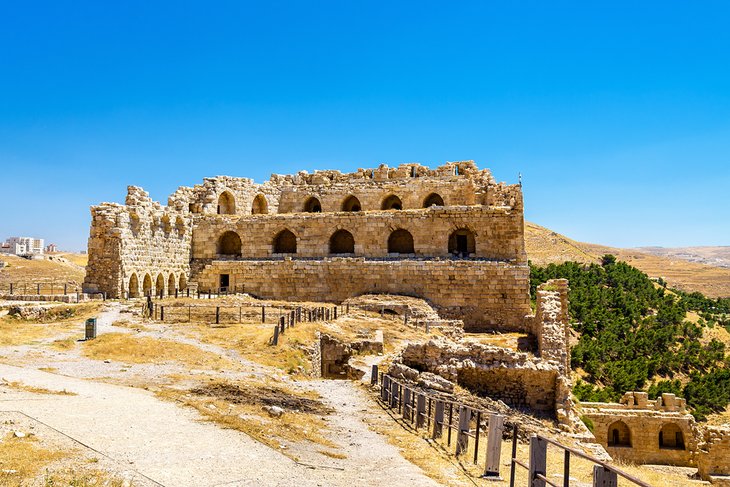
Although Kerak Castle technically isn't in the Dead Sea Region (it sits along the King's Highway, high above the Dead Sea), it is easily included in a Dead Sea loop itinerary, as it's only 52 kilometers southeast of Wadi Mujib.
Kerak is Jordan's most famous crusader-built castle, with dramatically well-preserved fortifications and a warren of barren-vaulted halls and chambers, and dungeon cells to explore.
It was built in the 12th century as part of the crusaders' line of defense, and retains an astounding amount of its original character, though various additions were made to the castle during the Mamluk era.
On a Dead Sea sightseeing drive trip starting from Amman or Madaba, you can easily fit in a visit to Bethany-beyond-the-Jordan, a dip in the Dead Sea, and a tour of Kerak Castle on the same day.


